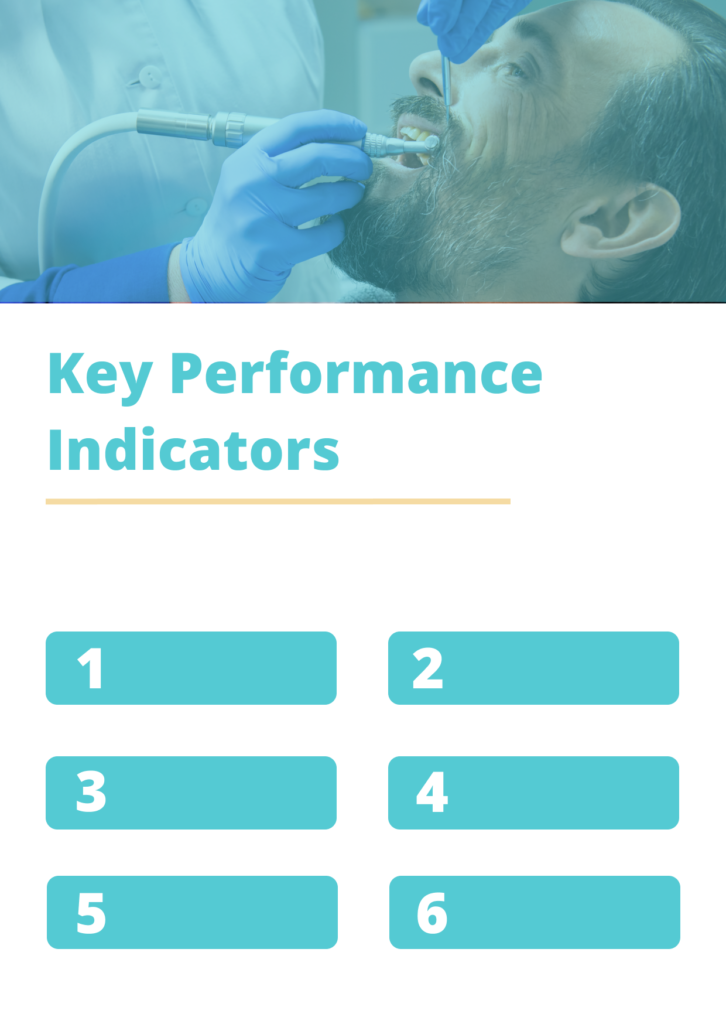Let me guess, you’re here because you’ve just graduated from dental school and are excited to start your own clinic. Or maybe you’ve been working with someone else for some time and are eager to start anew. In any case, marketing a brand new dental practice can be intimidating. There is no basis to build on so there is no existing credibility or patient base. So, where do you begin? What are your options? Our answer? A dental marketing plan! It’s common for dental clinics to want to do more marketing, but have no idea where to start. You’re probably daunted by the thought of marketing, along with content marketing, social media marketing, PPC, and other forms of advertising. Before jumping into things, it’s important to take a step back to ensure that your marketing plan is built on a strong basis that will result in better long-term performance. In this step-by-step tutorial, we’ll get into how to develop a dental marketing campaign that will help you successfully meet the new patients you’re looking for. In general, a marketing plan is a tactical blueprint that companies use to coordinate, implement, and monitor their marketing strategies over time. Simply put, it aids you in gaining a better understanding of the what, the when, the why, and the how of all the marketing strategies. The goal of a marketing plan is to organize your tactics and strategy. This will assist you in staying on course and evaluating the effectiveness of your strategies. Writing a marketing plan will assist you in determining your goals, customer personas, budget, strategies, and deliverables for your campaign. With all of this data in one place, it will be much simpler to stay on course with a campaign, notice what works and what doesn’t, and track the progress of the strategy. An effective marketing plan also communicates the main agenda and the various strategies involved. Finally, it allows you to chart the progress of your campaigns. A dental marketing plan is your strategic blueprint for launching and growing your dental practice. It coordinates all marketing efforts—social media, PPC, content marketing, and more—ensuring they work together to achieve your business goals. This plan not only helps you set clear objectives and budgets but also measures the effectiveness of different strategies, allowing you to make informed decisions and adjustments along the way. A marketing strategy explains how a company can achieve a certain objective or target. This involves which promotions, content, platforms, and marketing software they’ll use to carry out and monitor their goal. Although social media marketing may be handled by a larger campaign or agency, the work on Instagram may be considered an individual marketing strategy. One or more campaign strategies are used in a marketing plan. It serves as the foundation for all of your marketing strategies, allowing you to link each one to a bigger marketing operation and business goal. For example, let’s imagine that you’re planning to open your own dental clinic and want to boost brand recognition and get some clients. This means you’re going to have to create a marketing plan that’ll help introduce your clinic to the industry and target audience. Now can you see the difference between the marketing plan and marketing strategies? It’s entirely up to you how detailed your marketing plan is. Nonetheless, any marketing plan must go through a series of steps in order to be created. You can choose to use a range of marketing plans depending on your business. Some types of marketing plans are: This puts focus on the strategies or campaigns you’ll implement over a specific time span. This plan will illustrate the platforms, strategies, and promotions you want to run directly on social media. This strategy could include native ads, PPC, or paid social media campaigns. A paid marketing plan is basically any strategy that involves paying. This plan will serve as a guide for the techniques and strategies you’ll use to market your new product. This plan could include various methods, strategies, and campaigns that require you to use content to advertise your company or product. Although having a versatile and comprehensive marketing plan is critical for the success of your dental practice, creating a progressive strategy should come first. Your dental practice will need to devise a progressive dental marketing plan in order to compete, expand, and prosper. Your dental marketing plan is an important component of your overall plan. It should include all of the components needed to successfully promote your practice consistently. There are numerous reasons why your practice requires a marketing strategy, including the following: Your dental clinic is at a significant disadvantage if it lacks a vision and mission statement. These two main statements serve as a compass for your work. Setting attainable marketing goals are important for any dental practice. It is equally important to review them on a regular basis. These objectives must be concrete, accurate, and tied to a timeline. You must determine who your patients are and what their interests are in your community. You should also know who the competitors are, what their strengths and disadvantages are, and whether or not they are fulfilling the community’s needs. It’s possible to come up with sound strategies along with proactive ideas to help the company grow. However, you’ll need to keep track of them, delegate them to specific members of your team, and set realistic deadlines to accomplish them. Your clients are your patients. A marketing plan not only helps you define your target demographic, but it also helps your customers understand why they should select your dental practice and what makes your services valuable. So, where do you begin when creating a comprehensive dental marketing plan? Take the following steps: It’s critical to get the marketing plan off to a good start. In case you didn’t know, an executive summary is normally found at the start of a marketing plan. It’s essentially a synopsis or rundown of the business (in this case a rundown of your dental practice), as well as the key objectives from the entire marketing strategy. It also informs readers of the company’s priorities, marketing successes, future strategies, and other pertinent information. Think of your executive summary as the foundation for the remainder of the dental marketing plan. Your executive summary can include things like: Remember to keep your executive summary brief and to-the-point. Limit it to three to four pages. A successful executive summary should have enough information to spark the reader’s attention without being too detailed. You can discuss details throughout the rest of your marketing plan. Remember, the executive summary also establishes the tone for the rest of the marketing strategy. Consider the brand’s tone: is it polite and comedic? Are you competent and dependable? Motivating and forward-thinking? It’s a good idea to review your dental clinic’s ideals, vision, and mission before you get too far into marketing. Think of it as a guide; this helps provide context for your marketing plan. This segment is important for anyone reading your marketing plan because it informs them about the overall mission and goals of your company so they can better understand your marketing priorities, events, and plans for the future. This step won’t necessarily be included in your physical copy of your dental marketing plan, but it’s extremely important to think about while developing one. When it comes to branding, think of what makes you and your practice stand out. What do you have to offer that your competitors don’t? Take note of the things that motivate you professionally as a dentist. Think of the effect this has on your customers. Do you have unique views or practices? Your logo, web architecture, and even your social media voice can all be influenced by branding. One great example we’ve found is Tend. They’re a dental clinic based in NYC and they definitely have their branding identity figured out! They’ve traded the typical dental clinic look for something with a clean and modern feel that’s pure aesthetic bliss. Have you ever stepped into a dental clinic that’s this Instagrammable? Now it’s time to outline your marketing goals. Take note because this is one of the most crucial sections of your entire dental marketing plan. Take your time and be as specific as possible. As a general concept when it comes to setting goals, be as precise and S.M.A.R.T. as possible. We suggest setting targets that affect page traffic, conversions, and customer satisfaction. Also, it’s important to also use real numbers when setting goals. You might be wondering what I mean when I say S.M.A.R.T… Well, S.M.A.R.T stands for specific, measurable, attainable, relevant, & time-bound. Having S.M.A.R.T goals ensures that all of your goals are concrete and have a time limit for completion. For example, the goal may be to gain 25% more Facebook shares within three months. This should be relevant and attainable, depending on the overall marketing objectives. You should write down your objectives before you begin any plan, then begin to implement strategies to help you accomplish your goal. Let’s get one thing clear – KPIs and goals are NOT the same thing. The target is the desired result, and the KPI is a metric that measures how well you’re progressing toward that goal. KPIs not only define a particular metric for each of your goals, but they also provide a timetable for achieving them. Concrete numbers and dates should be added to make your goals clearer. For example: However, your marketing goals can be even more specific than this. A SWOT analysis is a basic but effective method for developing your dental marketing plan. The acronym SWOT stands for Strengths, Weaknesses, Opportunities, and Threats. Internally, the company’s strengths and shortcomings are components that you have more control over. Some examples include your marketing campaigns, your staff, and your advertising ventures. Meanwhile, opportunities and threats are external things that occur outside of your dental practice that have no control over. Take this pandemic for example. You should seize opportunities and defend yourself from risks. A SWOT analysis is a basic two-by-two grid that organizes your top strengths, weaknesses, opportunities, and threats into an ordered list. To create one, ask yourself what your strengths and weaknesses are, along with your opportunities and threats. A value proposition is a guarantee to produce something of value to your clients. It should compel a potential customer to purchase your product or service. The greatest factor you can measure on your platform is your value proposition; if you get it right, it will definitely give your dental practice a big boost. A value proposition is a straightforward argument that has: Visitors should see the value proposition on your homepage first, but it should also be available at all main entry points to the web. Let’s bring back Tend as an example: Tend’s value proposition is all about creating a dental experience that’s exciting for their clients. Think about how most people would rather skip going to the dentist because they’re scared or intimidated. What makes tend valuable is their focus on changing the dental experience for their clients. They turn it into something exciting and soothing. Answer those questions then have your value proposition in mind as you go on with your dental marketing plan. Remember, your unique value proposition will become increasingly important in future your marketing campaigns. This may not appear to be the most important aspect of the marketing plan, but it’s actually extremely valuable. User personas are an integral aspect of any dental marketing plan and cannot be skipped. It’s important to figure out who your potential client is so you can develop more targeted marketing campaigns. Naturally, each company’s target client is distinct. But as a dentist, it’s natural for you to have more than one type of client You should be thinking about how to attract the right clients to your dental clinic. After all, it’s not just about how many clients you get, but finding the right clients that will give your business the most value. Who do you think your ideal clients are? What are their objectives? Think of their most pressing issues then make a list. Ask yourself, what is your dental clinic’s approach to resolving their issues? Answering these questions requires extensive analysis and the data is critical. User research can be done in a variety of ways. You can create client surveys, conduct client interviews, organize focus sessions, or investigate other companies in the same industry. It would be easier to tailor your dental marketing plan to particular demographic behaviors, habits, and goals if you take the time to define and understand them. Here’s how to make a persona guide for your users: The first thing you can do is give each user persona a profile picture or symbol. It will help to give the personas a face, making them feel more genuine and human. After that, make a list of demographic identifiers such as age, job, income, goals, obstacles, and hobbies. The majority of companies would have a variety of potential customers. As a result, it’s critical to recognize and build a variety of user personas. This will allow you to properly segment your marketing strategies and set specific goals. In the end, the aim of building a buyer persona is to help organize and comprehend key details about your clients. Your next move is to do thorough research and an analysis to back up your marketing plan. This part is often accomplished by researching your competitors and evaluating the market’s environment. This portion of your dental marketing plan will help you figure out who your competitors are, what they’re up to, and how you can offer more value than your competitors. In most cases, competitor analysis should involve investigating the following: You’ll find some interesting opportunities if you look at your competitors’ strengths and weaknesses from all angles. Now that you’ve completed your research, it will be easy to incorporate this information into your marketing strategy. Lastly, divide your competitors into primary and secondary categories. The primary category includes competitors in the exact same industry as you, and the secondary category includes those who are not. The next step in your dental marketing plan is to outline your marketing budget. You must consider all financial aspects of the project during execution and delivery. After all, publicity is expensive and there can be hidden costs throughout these campaigns. Determine your maximum budget for marketing campaigns. This is a vital aspect of a dental marketing strategy because it determines how much you can market across paid platforms. Keep in mind the estimated client acquisition expenses and compare them to how much profit the average new client brings in to the clinic. Lastly, a comprehensive marketing budget also helps you decide between paid and unpaid services so that you don’t go over budget. After you’ve gathered enough contextual data and important metrics for your marketing plan, it’s time to build your dental marketing strategies. It’s easier to implement your plan if you break it down into smaller tasks. One way you can present your marketing strategy is through a mind map. Mind maps are a great way to illustrate a plan with a lot of moving pieces because they provide lots of detail in a cohesive way. Another option can be to create a flowchart to lay out your strategy via your objectives. Creating a project roadmap is another effective way to visualize your marketing strategy. Aside from a roadmap, a basic timeline will be included in the marketing campaign. You may also try a “Next, Now, Later” chart to assist you in visualizing your plan. Another factor to consider in your dental marketing strategy is to choose which platforms to market on. Should you go for social media platforms like Facebook or Instagram? Should you acquire PPC ads or just stick to SEO? Make sure to include all of this information in your dental marketing plan. Finish your dental marketing plan with a concise description of how you plan to monitor or measure your progress. You’ll save yourself a lot of time and stress in the long run by standardizing how you report results. You can go as in-depth as you like with this section of your marketing plan. However, there must be some specific criteria for measuring the success and outcomes. At the very least, your performance monitoring recommendations should state: You can include even more monitoring guidelines in your marketing strategy if you want. Use a checklist builder to keep track of marketing results, tasks, essential life events, and the everyday activities. The bottom line is that tracking and analyzing will help you figure out what’s working for your dental practice. Invest in what works, adjust what doesn’t, and continue to reevaluate as time goes on! After laying the groundwork with a well-defined marketing strategy and clear objectives, it’s time to move into the execution phase. Effective execution of a dental marketing plan involves leveraging multiple channels to reach your audience, engage them effectively, and convert them into loyal patients. Let’s explore how to implement strategies across three key channels: social media, digital advertising, and email marketing. In today’s connected world, social media is an indispensable tool for dental practices looking to enhance their visibility and patient engagement. Platforms like Facebook and Instagram not only allow you to reach a broad audience quickly but also enable you to establish a more personal connection with current and prospective patients. Through strategic use of social media, you can build a strong online presence, foster trust, and even manage your reputation, all of which are crucial for the growth and sustainability of your practice. Here’s how to start and maintain an effective social media marketing strategy from scratch: By following these steps, your dental practice can harness the power of social media to significantly boost your online presence and patient engagement. This systematic approach ensures that your social media efforts contribute effectively to your broader marketing objectives, helping to grow your practice in an increasingly digital world. Digital advertising is a powerful tool for dental practices looking to expand their reach and attract new patients. It offers precise targeting options and measurable results that traditional advertising can’t match. With the ability to target specific demographics and track every click, digital advertising allows you to understand exactly how your marketing budget is being spent and what returns it’s generating. Here’s how to build and execute a successful digital advertising campaign from the ground up: By systematically applying these steps, your dental practice can leverage digital advertising to significantly enhance visibility and attract more patients. This strategic approach ensures that every dollar of your advertising spend is trackable and contributes to your practice’s growth objectives, making it a vital component of your overall marketing strategy. Email marketing remains a highly effective tool for dental practices to maintain communication with patients and enhance patient retention. This strategy not only helps keep your practice top-of-mind but also strengthens patient relationships through personalized communication. Here’s a comprehensive guide to setting up and optimizing an email marketing campaign that keeps your patients engaged and informed. By methodically implementing these steps, your dental practice can develop a powerful email marketing strategy that enhances patient engagement, improves retention, and ultimately contributes to a thriving practice. This approach ensures that your communications are not only informative but also deeply personalized, fostering a stronger bond with your patients. Creating a solid, well-researched dental marketing plan is the way to go if you genuinely want outperform your competitors and gain new patients. A dental marketing plan will give you a base and a long-term plan that you can change to maximize success. Be consistent and commit! What are you waiting for? Quit wasting time, start building your dental marketing plan now! If you want more content like this, head over to our blog! Ready to take your dental marketing to the next level? Contact Just Digital today to explore our total marketing packages designed specifically for dental practices like yours. Our team of experts is ready to help you create a dynamic marketing plan that drives results. Visit our website or call us to get started!12 Step Guide To Creating An Effective Dental Marketing Plan + Free Templates

What is a dental marketing plan?
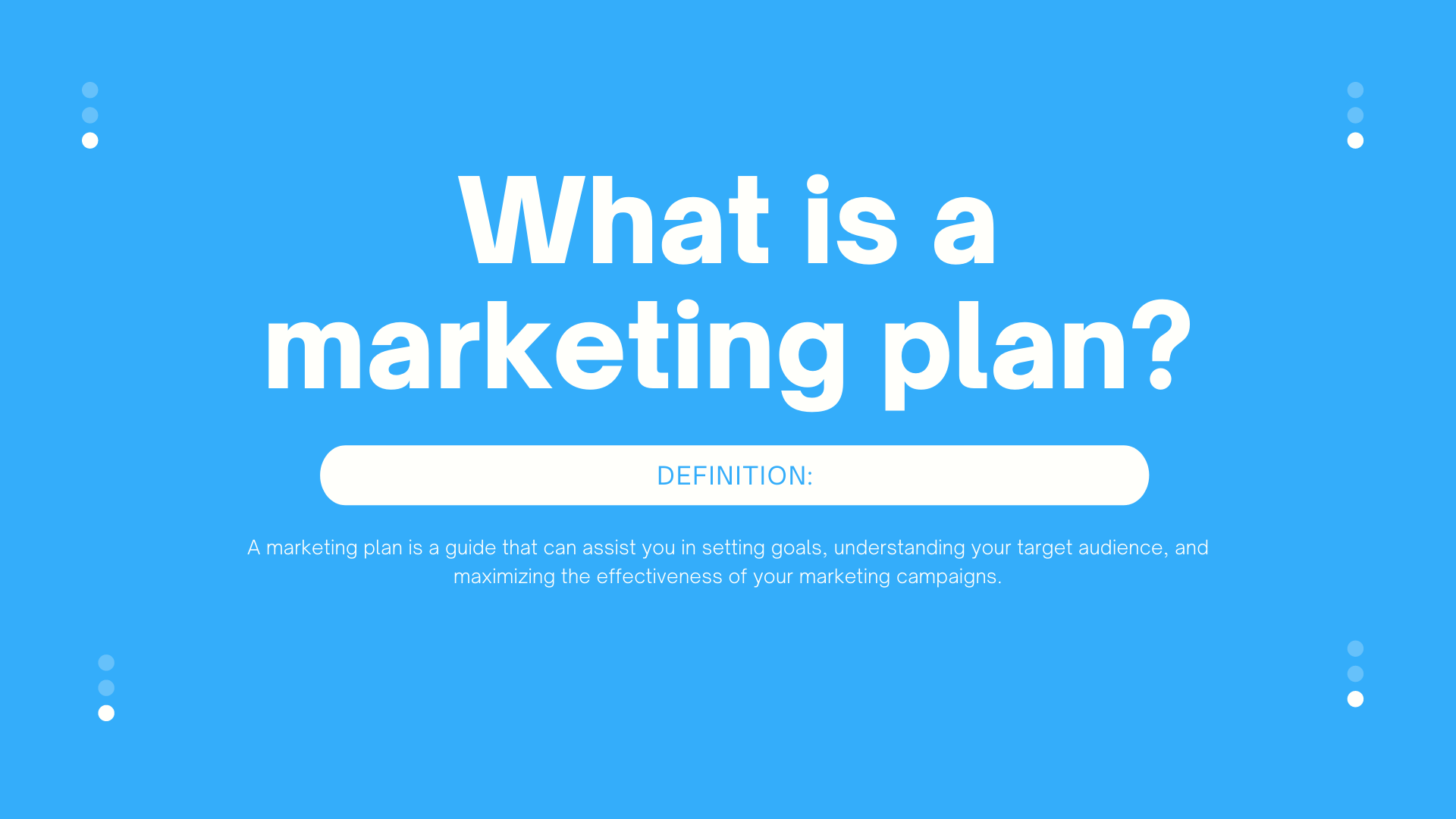
Understanding the Dental Marketing Plan
Marketing Plan VS. Marketing Strategy
Different Types of Marketing Plans

Quarterly/annual marketing plans
Social media marketing plan
Paid marketing plan
Product launch marketing plan
Content marketing plan
Why You Need a Dental Marketing Plan
It establishes a vision and mission for your practice
It specifies what you intend to achieve
It determines who the target market is
It acts as a road map for implementing smart marketing strategies
It spells out what makes your dental practice valuable
12 Step Guide To Creating An Effective Dental Marketing Plan
Dental Marketing Plan – Create an executive summary
State your vision and mission statement
Dive into your branding

Set S.M.A.R.T goals
Determine your key performance indicators
Create a S.W.O.T analysis
Write down your value proposition

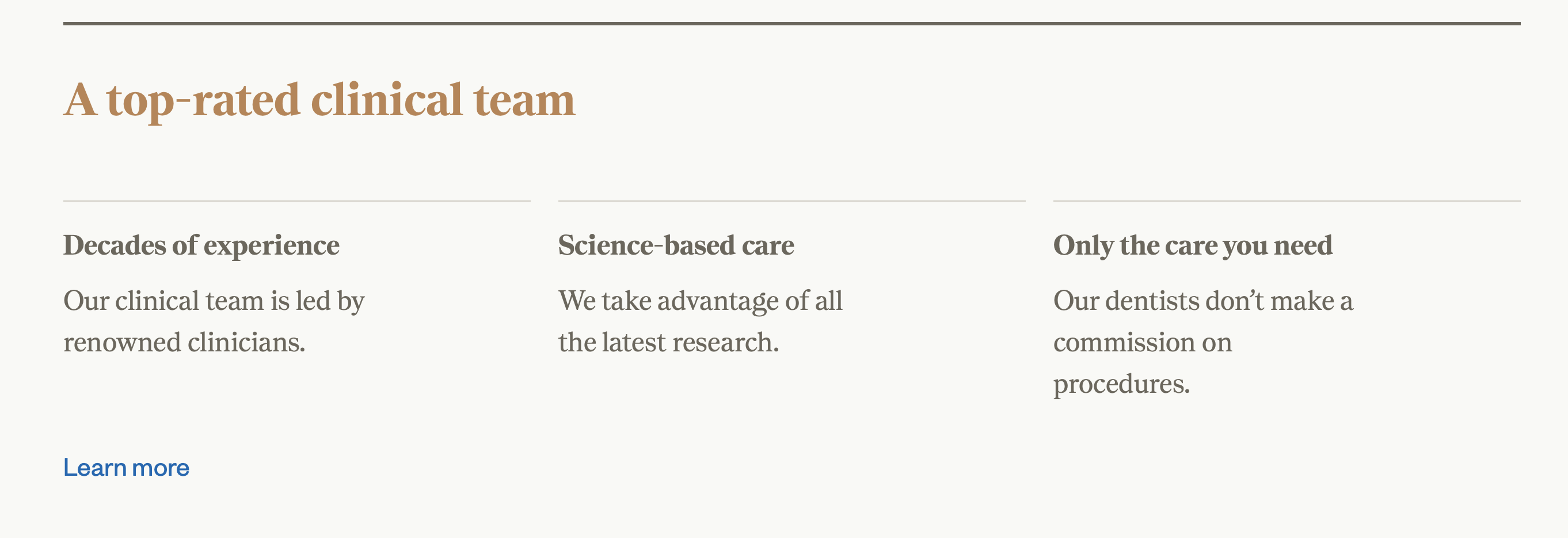 So, what’s your unique value proposition? What makes your dental practice different? What value can your dental clinic provide customers?
So, what’s your unique value proposition? What makes your dental practice different? What value can your dental clinic provide customers?Determine your ideal customer
“93% of companies who exceed lead and revenue goals report segmenting their database by persona.”
Do your competitor research
Evaluate your dental marketing plan budget
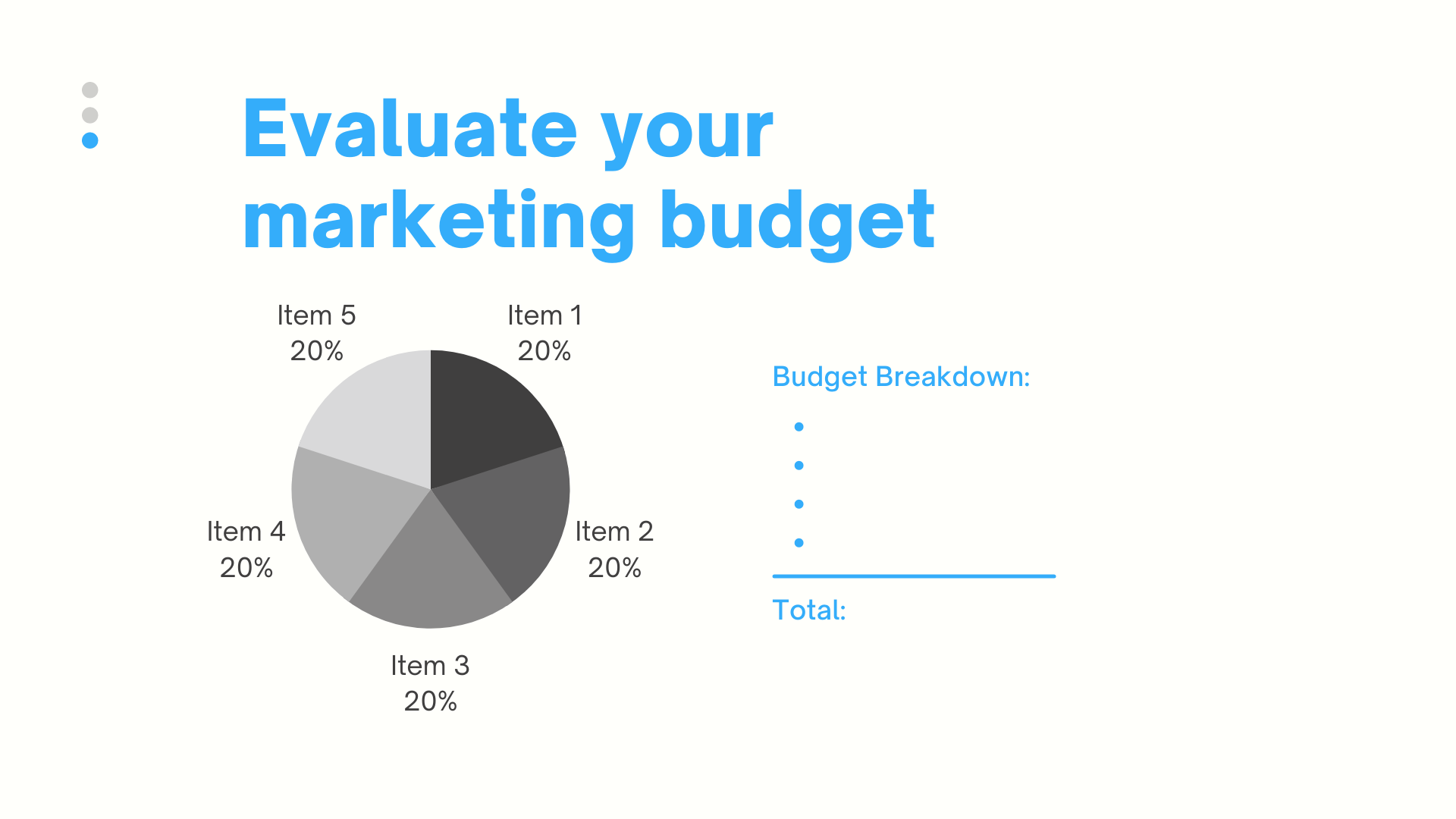
Building marketing strategies
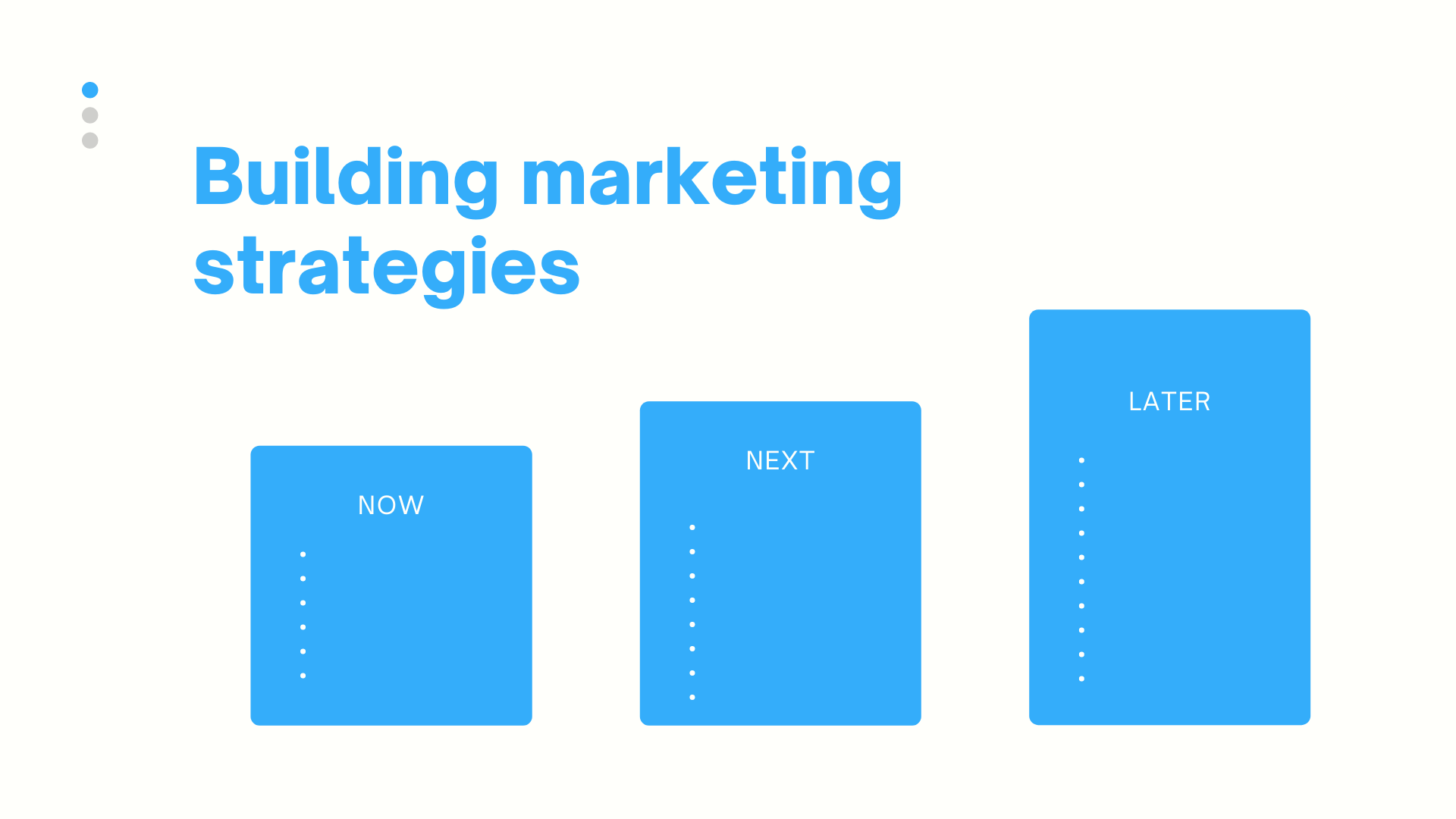
Track & analyze your progress
Keep a close eye on the campaigns and, if possible, measure the key metrics. For digital campaigns, you can use Google Analytics, Google Ads Manager, and Facebook Insights to see who is engaging with your content and how it is generating leads.Executing Your Marketing Plan: Social Media, Advertising, and Email Marketing
Social Media Marketing: A Step-by-Step Approach
Digital Advertising: Building Visibility and Patient Inquiries
Email Marketing: Engaging and Retaining Patients
Get started!
Let’s Grow Your Dental Practice Together!
With Just Digital,
Success is Easy-Peasy Lemon-Squeezy.
When life gives us lemons, we generate results. Contact us today and we can start making lemonade.



